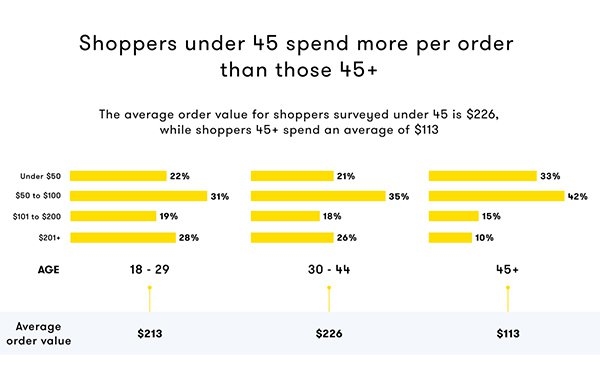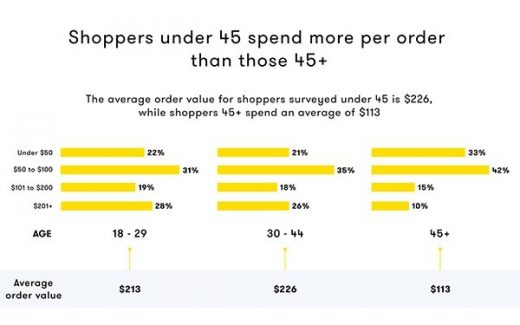Many Happy Returns – Or Not, Per PayPal Data
Many Happy Returns – Or Not, Per PayPal Data

Economic pressures continue to drive up returns. Nearly one in four consumers have returned a greater percentage of their online purchases due to inflation and other economic pressures that are impacting their financial health. This number skews even higher for those under the age of 45.
A survey of more than 2,000 U.S. consumers commissioned by PayPal and conducted in partnership with TRC, an independent research firm, provides insight into consumer shopping habits and how attitudes toward online returns can inform merchant behaviors.
In what is good news for merchants, the data shows that shoppers’ favorite way to return items also can be the lowest-cost option. Merchants stuck in the past and not willing to adapt may need to increase the ways they allow consumer to contact customer service. Some 72% of shoppers had to reach out to customer service for help with a return.
- 36% email for a return authorization code
- 32% start an online chat for support
- 31% called a customer service agent
Shoppers under 45 years of age spend more per order than those who are older. The average order value (AOV) for those ages 18 to 29 is $213, while for ages 30 to 44 it is $226, and for ages 45 and older it is $113.
Almost half of shoppers participating in PayPal’s study said they will buy 60% of their holiday gifts online this season, while 35% plan to spend more this holiday season compared with last holiday season.
If the gift is not the ideal one, it will go back to the merchant. In-person drop-off at third-party locations such as Amazon’s partnership with Kohl’s department store is ranked as the #1 return method, above home pick-up and returning to the retailer’s store. Some 54% of shoppers prefer in-person drop off for their returns, whether it be at a third-party or a retailer’s store.
Once in-store, 62% of consumers surveyed say they have used their refund to shop at a merchant’s own stores or at a third-party drop-off location. Third-party return locations offer a revenue stream for location partners.
Despite the high cost of gasoline, 96% of shoppers will travel to return a product for free. Only 4% are not willing to travel, while 9% are willing to travel up to 1 mile, 40% will travel up to 5 miles, and 35% will travel up to 10 miles. About 10% will travel up to 25 miles to make a return.
Consumers under the age of 45 and high-volume returners find mail returns most annoying. Some 79% of shoppers under 30 think mail returns are somewhat or very annoying. More than 40% of consumers would rather sit in rush-hour traffic than make a mail return.
Younger shoppers are less likely to have 24/7 access to a printer for printing return labels. About one-third of these shoppers have access to a printer 100% of the time.
Inconvenient returns lead to lost sales. Half of shoppers surveyed say they have abandoned their cart because there was no convenient return method.
One of the major challenges is that nearly half of shoppers said they don’t have continuous access to a printer to print return labels.
What do shoppers really look for when deciding what to purchase and from which merchant this holiday season?
- 87% want free returns when shopping with an online retailer
- 84% look for the return policy
- 78% say poor returns experience will make it less likely the consumer will shop there again
- 72% are more likely to shop with a retailer that offers in-person returns
- 72% are more likely to make an in-person return for an online purchase if refunds are received when dropped off
- 50% have abandoned a purchase because there was no convenient return method offered
- 40% prefer to exchange returns for a similar item, instead of getting a refund
- 41% will pay more for a more sustainable/environmentally-friendly return method
- 31% will pay up to a $5 fee for home/office pick-up for online returns if available
(24)


